In view of the frailty and the importance of peatland when it comes to carbon storage and its other multiple benefits such as biodiversity maintenance, carbon water storage and regulation, the Group has taken the stance to strictly prohibit the clearance and development of peatlands for new plantations regardless of depth.
To conserve and for better management of water and drainage in the peatland, a series of weirs and water gates were constructed across the collection drains to regulate the water level in the field and significantly reduce carbon emission. To comply with the MSPO standards, the water level in the collection drain is maintained at a range of 35cm to 60cm and at 30cm to 50cm for groundwater table in the field.
The Group ensures that our agricultural operations comply with the following:-
• No planting on land with high biodiversity value;
• No planting on protected and forest reserve land;
• No new development on peatland regardless of depth; and
• No development in high carbon stock forest.
Since 2015, the Group did not clear any land for new oil palm plantation development.
The impacts of fire can be catastrophic, including commercial loss, loss of life, air pollution and loss of biodiversity. Fires possess long-term commercial risk and the potential losses to the Group are high. Wider risks of fire include threats to climate change goals that could easily derail the Group from achieving economic and environmental sustainability.
In compliance with environmentally friendly practices as well as the principles and criteria set out in the MSPO standards, the Group adheres to a strict zero burning policy and enforces it without exception.
During the dry seasons, employees in all our plantations are directed to vigilantly lookout for any fire breakouts in the surrounding vicinity. Employees are continuously trained (extensive mock fire drills are conducted regularly) on how to control and manage fires. We have setup weather stations throughout the plantations to gather micro-climate information for regular fire safety risk assessment and ensure that adequate fire safety measures are put in place. Our continuous efforts have proven to be fruitful as there were no reported fire related incidents for five consecutive years.
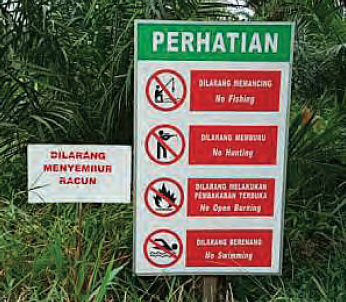
Our biggest source of emissions comes from Palm Oil Mill Effluent (POME). The discharged water produces methane gas which has 21 times more Global Warming Potential compared to other gases. To reduce methane gas emissions, the Group has biogas plants constructed in the mills. These biogas plants help to trap the methane gas.
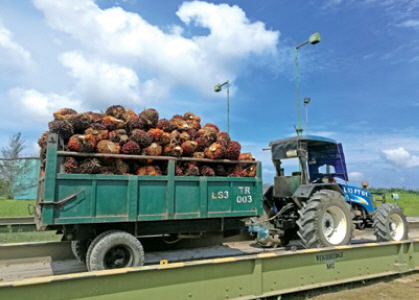
To be sustainable, our management is committed to energy conservation and the reduction of fossil fuel usage. We recycle oil palm and oil mill by-products such as press fiber and palm kernel shells for use as biomass fuel in the mills boiler.
For FY22, the boilers in our mills generated 16.8 million KWh of electricity from those by-products which is equivalent to electricity generated from burning 5.60 million litres of diesel. The use of these biomass fuels significantly reduces the consumption of non-renewable fossil fuels and generates greater cost savings as those are cheaper.
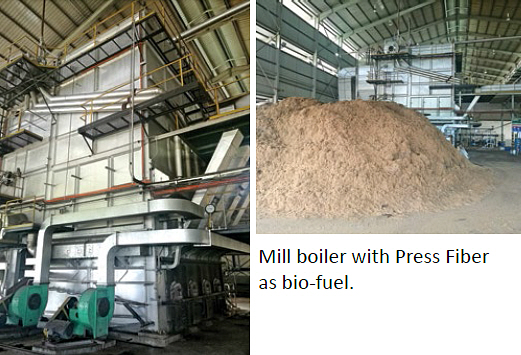
The Group’s water management strategies center on the optimization of water usage, increasing the number of water sources, the reduction of water consumption and the identification of water pollution sources.
In accordance with the water management strategies, the following measures were put in place: –
• The installation of water gates to control and maintain water levels for palm tree irrigations. In addition, water level was maintained at an optimum level in anticipation of potential shortfall of rain and to counter the risk of fire;
• The establishment of ponds, water catchment and water tanks at worker’s housing area to store rain water;
• The setting up of water treatment plant for milling usage and daily consumption while maintaining strict water efficiency;
• The strict prohibition of the discharge of chemicals, solid wastes and used lubricants into the waterways;
• The practice of water sampling twice a year to monitor water quality in line with EIA measures and to ascertain it is potable (safe for drinking) and for other daily usages; and
• The maintenance of buffer zones along the natural waterways where spraying and manuring operations are strictly prohibited.
POME is the waste water discharged from the processing of FFB. POME has high acidity, high biological oxygen demand (BOD) and high levels of organic matters which can pollute the waterways if left untreated. By using the aerobic and anaerobic ponding system, the treated water can be discharged safely into the environment. In FY22, 100% of the POME discharge from our mills was treated to meet local regulatory requirements (<20mg/L) prior to discharge. There is no incident where our POME discharge is over the limit and is harming the waterways.
The Group strictly observes the best practices in the handling and managing of waste at our sites. We take full precaution in disposing all waste products including domestic waste, agricultural waste, biomass or by-products generated by our oil palm plantations or oil palm milling sectors.
Biomass fuels such as press fiber and palm kernel shell are burnt in boiler to generate electricity. Recycling of nutrient rich biomass such as Empty Fruit Bunch (EFB) and POME sludge is a common practice within the Group. These EFB and sludge can be further processed to become bio-fertilizers thus reducing the need to acquire expensive agrochemicals which in turn save costs.
Another useful by-product of EFB is bunch ash. As peat soil is highly deficient in potassium (K), external application of high amounts of K is required. Using bunch ash as a source of K is more advantageous and preferable since it helps to neutralize soil acidity (Gurmit et al. MohdTayeb, 2002).
Scheduled wastes generated from the operations and biohazard wastes are stored, labelled and disposed of by licensed contractors in adherence to the government regulations.
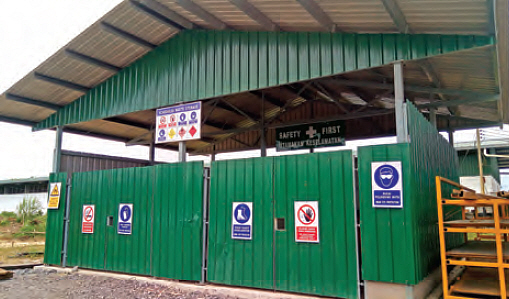
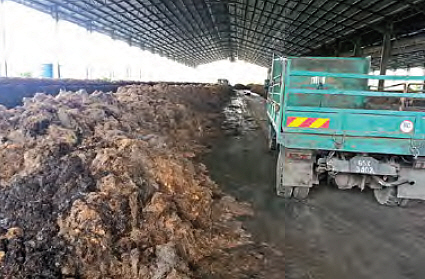
A High Conservation Value (HCV) is a biological, ecological, social or cultural value of outstanding significance or critical importance.
HCV areas which are more relevant to the Group encompass natural habitats that are either rich in biodiversity and are home to endangered flora and fauna species; or that are fundamental to the needs of local communities or to preserving their cultural identity. Global discourse on palm oil and logging activities is often tied to heavy biodiversity loss as well as significant changes in land composition and ecosystems. To mitigate such discourse, we have the responsibility to uphold and practise sustainable business operation to prevent any undue risks on the environment for the benefit of the present and future generations.
The Group had conducted Biodiversity Assessment for all of our oil palm estates covering a total land bank of 83,483 ha and with buffer zones of 11,335 ha. We had also conducted High Conservation Value (HCVs) Assessment for our Forest Management Units (FMUs). The findings from these assessments would help to determine the most effective length and in-depth research required for an effective HCV monitoring and management.
We have imposed a policy of “zero tolerance” towards killing, harming any of the endangered/ protected species listed under the International Union for Conservation of Nature (IUCN) and Protected Animals from Wild Life Protection Ordinance, 1988.

No Hunting signboard placed at the entrance gate
On biodiversity conservation in the FMU area, a total of 6 dry salt licks have been identified to-date. Salt licks possess high conservation value; it is a specific site where wild animals go to lick the naturally occurring salt deposits in order to supplement the essential minerals.
Out of the six (6) salt licks, three (3) have been established, demarcated and camera trapped by our Honorary Wildlife Ranger (HWR) team for continuous monitoring annually. The outputs shall become part of the overall measurement on population dynamics of mammals in the FMU area.
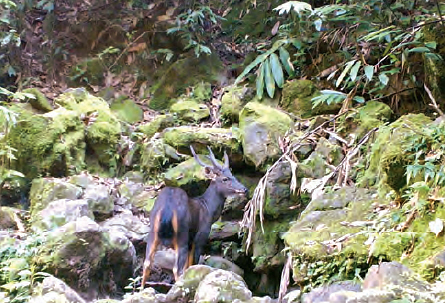
In order to minimise the impact of our operations on the natural environment, it is essential to cut back on the reliance on fertilisers, pesticides and herbicides.
As part of our integrated pest management practices, we use biological insecticides and pheromones in place of chemical pesticides to control the population of pests. Biological insecticide such as DiPel is effective against more than thirty different kinds of pests and has minimal effect on the environment, animals and humans, and is biodegradable. Pheromones traps have proven to be an efficient and effective way to trap Rhinoceros beetles.
Beneficial plants such as Cassia Cobanesis, Turnerasubulata and Antigononleptopus are planted to provide both shelter and supplementary food such as nectar to Sycanus, a type of insect that hunts the leaf-eating caterpillars and bagworms.
Surveillance and monitoring of pest outbreak is key to minimise the environmental and financial impact from excessive use of pesticides. Pesticides are used only when and deemed necessary against damaging outbreak.
By recycling plant biomass as discussed in the waste management section earlier, the zero burning technique improves soil organic matter, moisture retention and soil fertility. This reduces the overall requirement for inorganic fertilisers and decreases the risk of water pollution through leaching or surface washing of nutrients.

No.1-9, Pusat Suria Permata, Lorong Upper Lanang 10A, 96000 Sibu, Sarawak, Malaysia
T. +6084-213 255
F. +6084-213 855
Copyright © 2025 Jaya Tiasa Holdings Berhad 196001000095 (3751-V). All Rights Reserved.